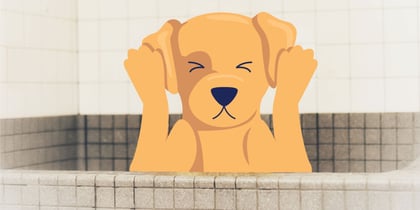Cataracts in Dogs: Symptoms, Causes, & Treatment

Table of Contents
Cataracts are a common cause of vision loss in dogs, and they can lead to complete blindness if left untreated. As pet owners, it is crucial to understand cataracts and the available treatment options to ensure our furry companions' well-being and quality of life.
Key Takeaways:
- Cataracts in dogs are a common cause of vision loss and can lead to complete blindness if left untreated.
- Cataracts can be caused by genetic predisposition, underlying health conditions like diabetes, trauma to the eye, nutritional deficiencies, and certain medications.
- Early detection and timely treatment are crucial in managing cataracts and preserving a dog's vision.
What Are Cataracts?
Cataracts are opacities that develop in the lens of a dog's eye, causing a clouding effect that obstructs vision. They can significantly impact a dog's ability to see and navigate the world around them. Cataracts are formed when proteins within the lens clump together, resulting in impaired vision.
Do Dogs Get Cataracts?
Yes, dogs can indeed develop cataracts. While cataracts can occur at any age, they are more commonly observed in older dogs. However, certain breeds may have a genetic predisposition to cataract development. Regular eye examinations are essential to detect cataracts early and provide appropriate treatment.
What Causes Cataracts in Dogs?
Cataracts in dogs can be caused by various factors. One significant factor is a genetic predisposition, which makes certain breeds more susceptible to developing cataracts. Additionally, underlying health conditions such as canine diabetes can increase the risk. Trauma to the eye, including injuries or inflammation, can also contribute to cataract formation. Nutritional deficiencies and certain medications have been linked to cataracts as well.
Dog Cataracts Symptoms
Recognizing the symptoms of cataracts is essential for early detection. Common signs include the following:
- Cloudy Eyes: Look for a hazy or milky appearance in your dog's eyes.
- Excessive Blinking or Squinting: Pay attention if your dog frequently blinks or squints their eyes.
- Unresponsive Pupil to Light: Check if your dog's pupil does not constrict when exposed to light.
- Unequal Pupil Sizes: Observe if your dog's pupils are different in size between the two eyes.
- Redness of Eye Blood Vessels: Look for redness or inflammation in the blood vessels of the whites of the eyes.
- Swollen or Bulging Eye: Notice if your dog's eye appears swollen or bulges out.
- Trouble Seeing in Low Light: Notice if your dog struggles to see in dimly lit areas.
- Increased Clumsiness: Watch for more bumps and trouble with coordination.
- Reluctance in New Places: Notice if your dog seems hesitant or anxious in unfamiliar environments.
- Changes in Behavior: Look for signs of withdrawal, anxiety, or reduced activity levels.
If you notice these signs, talk to a vet immediately. Early detection can help protect your dog's vision and improve their well-being.
Stages of Dog Cataracts
Cataracts in dogs progress through different stages: incipient, immature, mature, and hypermature. Here's an explanation of each stage:
- Incipient Stage: In the early stage, you may notice slight cloudiness in your dog's lens, but their vision is still evident.
- Immature Stage: The cloudiness becomes more noticeable, and your dog's vision gets blurry, especially in low light or at a distance.
- Mature Stage: The lens becomes fully cloudy, significantly impairing your dog's vision. They may struggle to see objects and need assistance to navigate.
- Hypermature Stage: This is the most advanced stage. The cataract may shrink or break apart, leading to complications. Vision loss is severe, and your dog relies on their other senses.
Remember, the progression of cataracts can vary, so regular check-ups with a vet are essential to determine the stage and the proper treatment. If you suspect cataracts in your dog, consult a veterinarian for guidance.
How Can I Help My Dog with Cataracts?
While there is no cure for cataracts without medical intervention, there are ways to support and assist your dog. Environmental adaptations, such as providing proper lighting and minimizing obstacles, can improve their safety and mobility. Regular veterinary check-ups and maintaining a healthy lifestyle are also important.
How Does a Veterinarian Diagnose Cataracts?
Your veterinarian will perform a clinical examination of your pet to check for signs of a cataract and a potential underlying cause. This may include:
- Applying an orange dye (fluorescein) to examine if there is any damage to the surface of the eye
- Checking the pressure inside the eye (intraocular pressure) to ensure it isn't raised (glaucoma)
- Performing a Schirmer Tear Test to evaluate tear production and rule out a dry eye
- Using an ophthalmoscope (a handheld instrument) to check the structures inside the eye
- Urine & blood tests, if necessary, to rule out diabetes and other conditions
- Blood pressure checks to assess for high blood pressure
In some cases, referral to an ophthalmologist specialist may be needed to identify the cause of a cataract.
Cataracts in Dogs Treatment
The treatment options for cataracts in dogs vary based on the severity of the condition and its impact on the dog's quality of life. Cataract surgery may sometimes be recommended to remove the affected lens. Medications can be used to alleviate symptoms, while alternative therapies have the potential to slow down the progression of cataracts in dogs.
Cataract Surgery for Dogs
The only cataract surgery that can restore vision is under a general anesthetic. This procedure is called 'phacoemulsification' and is generally performed only by a specialist.
Phacoemulsification involves removing the material from the lens and replacing it with an artificial lens. In most cases, this will restore eyesight and prevent other cataract complications.
Dog Cataracts Treatment Without Surgery
There are alternative treatments available for dogs that are not suitable candidates for surgery or for pet owners who prefer non-surgical options. Medications may be prescribed to effectively manage symptoms and help slow down the progression of cataracts in dogs. Lifestyle adjustments, such as providing a safe and comfortable environment, can also be beneficial.
How to Prevent Cataracts in Dogs
Unfortunately, there is no way to prevent cataracts. However, certain breeds are at particular risk of eye disease, so it is always advisable to research before buying a dog. If you are still deciding whether a breed you are interested in is at risk of eye disease, please contact your veterinarian, who can guide you.
Conclusion
Cataracts in dogs can significantly impact their quality of life and overall well-being. By understanding the symptoms, causes, stages, and available treatments, you can proactively protect your dog's vision and provide them with the necessary care.
If you suspect your dog may be experiencing cataracts or if you observe any signs of vision impairment, it is crucial to seek prompt veterinary consultation. Detecting cataracts early and providing timely treatment can greatly impact the management of the condition and help preserve your dog's vision effectively.
Book a wellness check or virtual vet visit with BetterVet if you have concerns about your dog's eye health or need professional guidance on cataract management.
Frequently Asked Questions
What do cataracts look like in dogs?
Cataracts in dogs appear as a white disk positioned behind the iris, which is the colored part of the eye. This cloudiness obstructs the passage of light, leading to vision problems. Cataracts can vary in size and severity and may progress over time if left untreated.
What age do dogs get cataracts?
Dogs can develop cataracts at any age, but they are most commonly seen between 1 and 5 years old. However, certain factors such as genetics, underlying health conditions, and trauma can contribute to cataract development at different ages.
Can my dog live with cataracts?
No, it is not recommended for dogs to live with untreated cataracts. Untreated cataracts can cause complications such as deep inflammation and glaucoma, which can be painful for the dog. Early detection and appropriate treatment options, including cataract surgery, can help improve the dog's quality of life and prevent further complications.
Can dog cataracts be removed?
Yes, dog cataracts can be removed with a surgery called phacoemulsification. This type of surgery is a specialized procedure performed by veterinary ophthalmologists.
Are cataracts painful in dogs?
No, cataract in dogs is not painful. However, they can lead to painful complications, especially if they become chronic and lead to secondary complications within the eye. Cataracts can cause discomfort, inflammation, and other painful conditions like glaucoma.
How much does it cost to remove cataracts surgically?
The cost of surgically removing cataracts in dogs can vary based on factors such as the extent of cataracts, any additional procedures required, and the location of the veterinary clinic. On average, cataract surgery can range from $3000 to $4000, but it's essential to consult your veterinarian for an accurate estimate based on your pet's specific needs.
What is the difference between glaucoma & cataracts in dogs?
Glaucoma in dogs is characterized by increased intraocular pressure due to improper drainage of fluid, leading to pain and potential vision loss. On the other hand, cataracts refer to the clouding of the lens within the eye, resulting in impaired vision. While both conditions can affect a dog's eyes, their underlying causes and symptoms differ.






